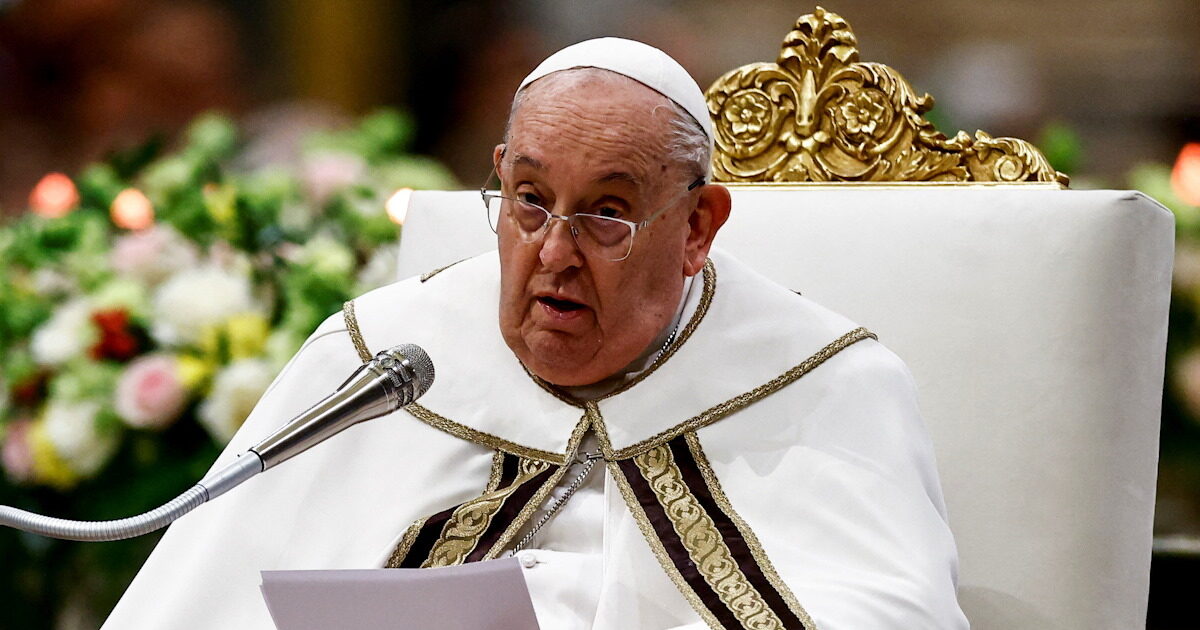He passed away at the age of 88 the Pope Francis Easter Monday (21.04.25). Pontiff was hospitalized from February 14 to March 23, having suffered double pneumonia.
According to the Vatican’s announcement, Pope Francis died at his residence at Casa Santa Marta.
The news of his death has shocked the international community, with believers already gathering in the Vatican to pay tribute.
Pope Francis (Latin: Franciscus), world -famous Mario Bergolio, was the Argentine priest and the 266th Pope of the Roman Catholic Church.
Was elected to March 13, 2013. In his first speech on March 16, he told reporters that he had chosen to be named in honor of St. Francis of Assisi, because he was particularly concerned about the prosperity of the poor.
It was the first time a pope was called ‘Franciscan. “ On the day of his election, the Vatican clarified that his official papal name would be “Francis” and Not ‘Francis A’as there was no reason to have a numbering for him.
At the same time, he was the first Pope from Latin America, but also from America in general, as well as the first Jesuit Pope.
Prior to his election as a Pope, he served as a cardinal. He has been Archbishop Buenos Aires since 1998. He became a cardinal of San Roberto Bellarmino in 2001.
His work is huge. Francis abolished the allowances paid to the Vatican officials during the election of a new Pope, amounting to several millions of euros, choosing to donate money for charity. It also abolished the 25,000 -euro annual allowance paid to the Cardinals serving the Vatican Bank for Supervisors.
Burial, secret power strife and conception
His death is followed by a strictly defined protocol that has evolved over the centuries, with some of the Vatican traditions dating from ancient Rome.
At the end of this process, the new leader of the Catholic Church will be elected in an electoral process full of tension, with progressive and conservative cardinals claiming control of an institution with more than a billion loyalists worldwide.
The confirmation of the Pope’s death is a traditional task of Camerlengo (a senior Vatican official). At the moment, the post is held by Irish descent Cardinal Kevin Farrell.
If the delivery is followed, Farrell will visit Pope Francis’ body in his private chapel and will shout his name to “wake him up”.
If the Pontiff does not respond, according to tradition, his ring – which serves as a stamp for official papal documents – is destroyed or distorted, marking the end of his term of office and the papal apartments are sealed.
The period of mourning
Pope’s death is followed by nine days of mourning, known as novendiale, A tradition of roots in Roman antiquity. Italy also usually declares national mourning.
The Pope’s body will be blessed, dressed in papal vestments and exposed to St. Peter’s Basilica for public pilgrimage. Hundreds of thousands of people, including foreign leaders and officials, will be in the queue to pay tribute.
During this period, the Holy See enters a transitional phase called Sede Vacante (“seat is empty”), in which the Church’s rule temporarily passes to the College of Cardinalia (the Conqueror) although no major decision can be made until a new Pope is elected.
The burial
The Pope’s funeral will probably take place in St. Peter’s Square, with thousands of mourners flocking to the Vatican. The ceremony will be chaired by the Dean of the Cardinal College, 91 -year -old Italian Giovanni Batista Re.
Traditionally, the Pope is buried in the Vatican caves, Underneath the Basilica of St. Peter, where there are almost 100 papal burials, including that of Francis’ predecessor, Pope Benedict Es, who resigned in 2013 and died in 2022.
However, Francis stated in 2023 that he chose the Basilica of Santa Maria Maggore (Santa Maria Maggiore) in Rome as his last residence, making him the first Pope for a century that has been buried outside the Vatican.
According to tradition, the Pope buried in three coffins: One of a cypress, one of zinc and one of the elm, placed in each other. Pope Francis, however, has requested that he be buried in a single coffin made of wood and zinc.
‘Habemus Papam’: The election of the new Pope
Two to three weeks after the Pope’s funeral, the Cardinal College will meet in the Sistine Hat to carry out the Conclave, the highly secret process of electing a new Pope.
On the day of the vote, the Sistine Hat, with its famous roof painted by Michael Angelos, is also sealed by the Cardinals, who have vowed into confidentiality, are locked in.
Only the cardinals under 80 years of age have the right to vote. About 120 will vote secretly for the candidate they chose, writing their name on a ballot paper and placing it in a chalice at the top of the Holy Bank.
If no candidate receives the required majority of 2/3, another round of voting is held. There may be up to four rounds per day.
Once counted The ballots, burn on a stove in the Sistine hats, which has been installed in advance by the Vatican firefighters. A second stove burns a chemical that sends a smoke signal through a chimney In the outside world: Black tobacco means that no new pope has been selected, white tobacco means he has.
Once elected, the new Pope appears on the balcony of St. Peter’s Basilica and is announced: “Pope – έχουμε πάπα».
Then, the newly elected Pope, after choosing a papal name (probably one honoring a saint or predecessor) and wearing a white razo, goes out to the balcony to give his first speech to the public. And with that, the Catholic world has a new leader.
Along with the determination of the teachings and the ethics of the Church, the Pope exerts significant diplomatic and political power in global politics, acting as a mediator in world conflicts and guiding humanitarian efforts.
